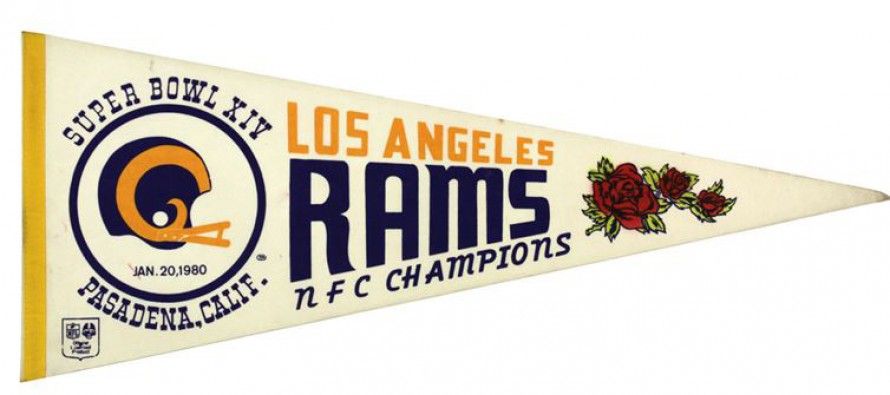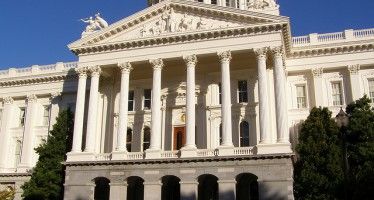The economics of football stadiums

 CalWatchdog.com has run several stories on the National Football League’s maneuvers with the Los Angeles market, which currently doesn’t have a team. It’s worthwhile to step back a little and consider the economics of sports stadiums, which has been studied thoroughly by economists.
CalWatchdog.com has run several stories on the National Football League’s maneuvers with the Los Angeles market, which currently doesn’t have a team. It’s worthwhile to step back a little and consider the economics of sports stadiums, which has been studied thoroughly by economists.
Los Angeles is somewhat unique in that it’s one of the few markets where there is strong resistance to tax subsidies for stadiums. As the Feb. 23 Los Angeles Times reported, another reason the Southland doesn’t have an NFL team “is that while every other city talks about what it will do to either lure an NFL team or keep the one it has, L.A. talks about what it will not do — namely it will not help finance a venue with taxpayer money. The Hollywood Park and Carson plans call for privately financed stadiums.”
The San Diego Chargers and Oakland Raiders are considering combining in a potential new stadium in Carson. The St. Louis Rams are looking at a new stadium in Hollywood Park.
However, the Los Angeles stadium shutout allows the NFL to manipulate other cities. The Times noted the NFL “depends on using the L.A. vacancy as leverage to get stadium deals done in other cities. Since 1995, 27 of the 32 teams have either gotten new stadiums or had at least $400 million in renovations on their existing ones.”
Stadium jobs
Stadium backers cite the jobs created, or retained, when a new stadium is built. For example, the New Minnesota Stadium — its working title until a corporate sponsor is signed up — was advertised as a big jobs creator. The Minneapolis-St. Paul Business Journal reported the pitch in 2009:
“The Metropolitan Sports Facilities Commission says a new Minnesota Vikings stadium would create approximately 13,400 jobs and an estimated economic impact of $1.35 billion.
“Of the 13,400 jobs created, about 8,000 would go to tradespeople during the building process, and $577 million — more than half of the roughly $1 billion in construction costs — would go toward wages and salaries for construction workers and others working on the project, according to the report.
“Once the stadium opens, it would generate annual direct spending of $145 million, including spending by fans, the Vikings organization, players, staff, visiting teams and the NFL in connection with games and operations.
“It also would generate more than $32 million per year in tax revenue. That compares to the roughly $18 million a year currently generate by the Vikings.”
That eased the way in 2012 for the $975 million stadium to receive large subsidies from the state and the city of Minneapolis. Forbes reported:
“Minnesota Governor Mark Dayton signed a bill last week approving the plan that would include a 30-year lease for the Vikings and have the state contribute $348 million, the city of Minneapolis $150 million upfront plus $6 million per year for operating costs, and $1.5 million per year to a capital reserve fund. …”
Economists
Yet economists who study the matter insist there isn’t much return for taxpayers. Roger Noll is perhaps the country’s top expert on stadium financing. He’s a professor of economics at Stanford University. He explained to EconTalk host Russ Roberts:
“Even in the best of circumstances what you’ve created is something that essentially sucks the blood out of a neighborhood. Because it’s so rarely used. And indeed, they create slumps. As opposed to being engines of growth. And cities who put in hundreds of millions of dollars into football stadiums inevitably find themselves with big losses. …
“So, the bottom line to it is: Cities should not subsidize baseball and football stadiums, if the goal is engine of economic growth or financial benefit. Now since I don’t have anything against San Francisco subsidizing the opera, I can’t say: Therefore it follows you shouldn’t pay the money at all. But the decision to pay the money should be based purely on having it in the community because you like it. As opposed to: It’s going to return some great financial bonanza.”
Shifting money
The reason why stadiums don’t generate higher long-term revenue is that they just shift money from other entertainment spending. Fans only have so much money. What they spend on tickets and food for a new sports team is taken away from what they might have spent, or spent in the past, on Disneyland, Universal Studios or a local movie theater. The money is not created, but shifted.
Noll also pointed out stadiums are built differently today than in the past. Stadiums such as Fenway Park in Boston and the old Tiger Stadium in Detroit were built in the middle of neighborhoods. After a game, fans would go to local bars and restaurants to celebrate a victory or rue a loss.
But new stadiums are built with their own shopping complexes and in the middle of vast parking lots. That keeps fans within the facility, spending money to the benefit of team owners and businesses within the complex, but not local businesses on the outside.
John Seiler
John Seiler has been writing about California for 25 years. That includes 22 years as an editorial writer for the Orange County Register and two years for CalWatchDog.com, where he is managing editor. He attended the University of Michigan and graduated from Hillsdale College. He was a Russian linguist in U.S. Army military intelligence from 1978 to 1982. He was an editor and writer for Phillips Publishing Company from 1983 to 1986. He has written for Policy Review, Chronicles, LewRockwell.com, Flash Report and numerous other publications. His email: [email protected]
Related Articles
Vallejo’s struggles capture CA city perils
After three years spent in bankruptcy, 2008-11, running the city of Vallejo is still a struggle. Facing a weakened police force
Dem split stalls right-to-die bill
Under pressure from powerful faith-based constituencies, Southern California Democrats serving in the Assembly have broken rank with their party and
Will School Block Grants Replace Earmarks?
MAY 3, 2011 By WAYNE LUSVARDI In a February report, the Legislative Analyst’s Office charged that “virtually every aspect of K-14




